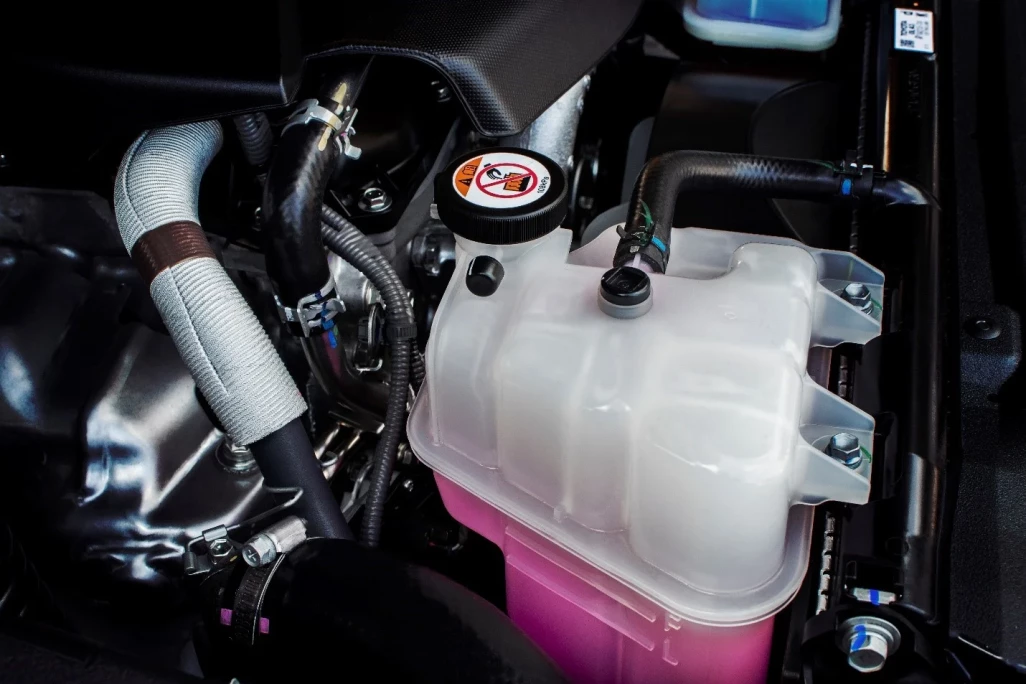Choosing and using engine cooling system fluid: what you need to know

In internal combustion engines, cooling is achieved through the use of special compounds known as antifreeze. There are two types of antifreeze: concentrate, which needs to be diluted with distilled water, and ready-to-use products. The fluid not only prevents overheating and freezing but also protects the cooling system from corrosion, maintains the cleanliness of the channels, and extends the service life of components such as the water pump, thermostat, and radiator.
Antifreezes come in different compositions and change their properties during use, so they cannot be mixed. The fluid has a limited service life, so periodic replacement and monitoring of its condition are necessary.
Requirements for antifreezes
The cooling system fluid is subject to harsh conditions, so special requirements are placed on it. The properties of the fluid must ensure maximum efficiency of the engine cooling system, reliability of the assembly, and its lifespan. The fluid should have high thermal conductivity and heat capacity, a high temperature range, good corrosion resistance, and anti-friction properties.
In addition, antifreezes have a number of properties that make them the preferred choice for cooling systems in vehicles. Firstly, they are able to effectively protect the metallic components of the cooling system from corrosion. Secondly, they have high heat capacity and thermal conductivity, which allows for effective removal of heat from the engine. Thirdly, they have anti-friction properties, which reduces engine wear.
However, when using antifreeze, it is important to take into account a number of features. First and foremost, it is necessary to monitor the condition of the expansion tank and the level of antifreeze in it. It is also not recommended to mix antifreezes of different brands and colors to avoid disrupting their chemical balance. When replacing antifreeze, it is necessary to ensure that the new antifreeze is compatible with the materials used in the cooling system components.
In addition, it is important to remember that to achieve the best protection against freezing and corrosion, it is recommended to change the antifreeze according to the vehicle manufacturer's recommendations. This usually happens at certain time intervals or after a certain mileage.
It is also important to remember that when replacing the engine coolant, precautions must be taken, as glycols are toxic substances. It is necessary to avoid contact of glycols with the skin and eyes, as well as inhalation of vapors. If glycols come into contact with the skin or eyes, it is necessary to immediately flush the affected area with water and seek medical attention if necessary.
Using Antifreeze
Let's talk about the use of antifreeze. The need to mix ethylene glycol or propylene glycol with distilled water is dictated by the fact that the freezing point of such a solution depends directly on the proportions of these two components.
In simple terms, water freezes at zero degrees Celsius, ethylene glycol at minus 12 degrees Celsius, but their mixing in different proportions allows for the creation of solutions with a freezing point threshold ranging from zero to minus 70 degrees Celsius or even higher. The ratio of glycol to water also affects the boiling temperature of the solution.
Without going into too much detail, in practice, the lowest freezing temperature can be achieved if the solution contains slightly less than 67% ethylene glycol, which has been diluted with 33% water. At the same time, the same or very similar freezing temperature can be achieved at different water-to-concentrate ratios.
As for practical use, car owners often use a simple scheme when replacing engine coolant in many regions, diluting the antifreeze concentrate with water in a 60/40 ratio. Note that this is a general guideline, and before preparing the solution, be sure to check the specific recommendations of the antifreeze manufacturer on the packaging.
To check the ratio of ethylene glycol to water in the solution, density is additionally measured. For this purpose, an areometer is most commonly used. Based on the obtained data, it is possible to determine the content of ethylene glycol and the crystallization temperature.
Moreover, it is important to remember that for the best protection against freezing and corrosion, it is recommended to replace antifreeze according to the recommendations of the car manufacturer. This usually happens at certain time intervals or after a certain mileage.